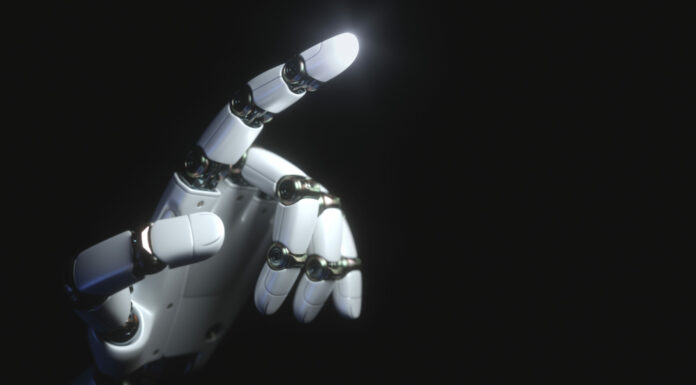
THE intelligence may be artificial, but the effects will be real. AI is set to take the mining sector by storm, with huge gains for safety, productivity, and innovation seen on the horizon. Jobs will be lost in the process while new ones will emerge, but the mining sector will be leaner, cleaner, healthier and safer.
AI is a big leap beyond mechanisation and even digitisation, and it’s relatively early days. Tractors began replacing livestock a century ago, but could not choose which field to plough and when. AI, as the term suggests, can perform tasks associated with human intelligence such as decision-making and problem solving.
“AI is basically when you expose an algorithm to a certain situation and that algorithm goes through that situation and it learns from the situation. The idea is to enhance the intelligence of an operation or a system artificially so that it can enhance human intelligence,” Ahsan Mahboob, the head of the Sibanye-Stillwater Digital Mining Laboratory (DigiMine) at the Wits Mining Institute (WMI) told Miningmx in an interview.
The emerging areas where AI is being applied to mining include exploration, dust level and gas detection, tailings dam management and data processing, which even includes the mapping of social “hot spots” to improve relations between the sector and its host communities.
Adopting AI will focus human minds in the C-suite, and boardrooms that don’t crack this will fall behind the curve.
“We see AI as a tool to help making miners’ jobs easier. Despite the benefits, lots of research needs to continue on the risks of using AI and how we can best address these risks,” said Sietse van der Woude, the senior executive for Modernisation and Safety at the Minerals Council SA, the umbrella group for South Africa’s mining sector.
A recent Minerals Council survey found that over 50% of its members were piloting AI tools and 25% will do so within the next five years.
“AI will play a role in mining just because of its sheer capacity to handle data in huge volumes, and machine learning is going to become important because there is just not enough human capacity to look at all the data that can be generated with modern geophysics and geochemistry,” Errol Smart, CEO of Orion Minerals, told Miningmx.
“You’ll never remove geologists or the need for the skills that goes with it and the experience. But you can teach a machine to do a lot of the menial tasks,” he said.
Asked if they were pursuing AI technology at Orion, which is rolling out its Prieska Copper-Zinc project in the Northern Cape, Smart replied: “Not yet, but we are in discussions with people about it.”
Exploration potential
On the exploration front, AI technology is already being credited with some finds.
“There are several already established applications of AI within the mining industry and its operations. The first is prospecting and exploration,” noted a study published in December 2022 by the Technical University of Munich. “AI-enabled applications for these tasks have been seen and used in Goldspot Discoveries Incorporated and IBM Watson to achieve high accuracy in locating mineable prospects.”
Goldspot has been a pioneer in the field, using AI combined with old-fashioned geology. In 2021, it announced the finding of a high-grade gold mineralisation at the Beaufor deposit in Quebec.
“GoldSpot’s AI-based approach was combined with traditional geological expertise to narrow down potential targets, which reduces financial risk by prioritising the ideal locations for exploration drilling,” the company said.
We see AI as a tool to help making miners’ jobs easier. Despite the benefits, lots of research needs to continue on the risks of using AI and how we can best address these risks – Sietse van der Woude.
“GoldSpot generated gold targets using a Smart approach of knowledge-expertise and AI data-driven methods. For the latter, the analysis trains machine learning algorithms to predict the presence of gold using all variables.”
And exploration is high on the industry radar screen after the disruptions caused by the Covid-19 pandemic amid a scramble for the green metals needed to power the unfolding clean energy transition. Global exploration budgets reached a nine-year high of $13bn in 2022, a 16% increase over 2021, according to S&P Global’s World Exploration Trends 2023 report.
Such budgets will increasingly include AI applications on the spreadsheets and that could reduce costs if it does indeed lead to the accurate targeting of mother lodes over sterile deposits.
Community relations
One fascinating area where AI may soon be applied is community relations. This is a major issue in mining jurisdictions such as South Africa, where outbreaks of social unrest often disrupt operations.
One such initiative is the focus of research at the Wits DigiMine, part of the EU-funded MasterMine project.
“The idea is to provide 24/7 stakeholder engagement, particularly for mining communities because we want to minimise the gap between the mining communities and the mine management,” said Wits’s Mahboob, who is the lead researcher on the project.
“Our aim is to build an intelligent chatbot algorithm so that mining companies can do hot-spot mapping. If a number of issues has been reported from a certain location you can clearly identify that that area is a hot spot. And by having these hot spots, the mining companies can address those issues in advance as a proactive approach rather than waiting for these mining communities to start a protest,” he said.
And it’s not just a tool for the industry.
“Mining communities can also use it, so for example they can report that there is a water contamination in their area and if certain complaints have been lodged from a certain area, that area will be highlighted as a hot spot for that issue. And mining companies can address that issue in advance,” Mahboob said.
So one of the aims is to make “mining companies accountable for their environmental impacts”, he said.
“By incorporating not only large amounts of economic data, but also significant amounts of data on environmental, land use, communities, and governance factors, multi-objective optimization of operations through machine learning processes is potentially useful,” notes the report cited above by the Technical University of Munich.
Among other things this points to how AI can complement the work of risk analysts and consultancies, an area which has seen huge growth the past couple of decades. It also means that such analysts might face the prospect of being replaced by AI technology, a risk that would not have been in their modelling a few years ago.
More widely, AI is seen playing a role across the mining value chain.
“AI technologies have the potential to improve decision-making across the mining value chain. By integrating data from different areas such as safety, production, HR, and asset management, AI algorithms can provide insights and recommendations that consider multiple factors simultaneously. This enables better and faster decision-making to balance competing priorities,” Van der Woude of the Minerals Council said.
Health & safety
AI is at the cutting edge of improving health and safety conditions in the mining sector. This is critical as ESGs – environmental, social and governance issues – top the corporate agenda in response to the concerns of investors and public opinion.
“AI cameras can be employed for real-time detection of dust levels in mining operations. By continuously monitoring and analysing the data, AI algorithms can provide early warnings, enabling prompt actions to mitigate health and safety risks associated with high dust levels,” Van der Woude said.
The health hazards linked to dust are a major concern for communities that live near mine dumps such as the ones that still ring Johannesburg, many of which are being slowly removed as companies like DRDGold extract leftover riches from them.
The Wits DigiMine is working with European researchers to map the dust particles around Johannesburg using AI algorithms.
You can do a lot of data processing through this rather than having a guy in a bakkie [pick-up truck] driving around a tailings facility and trying to measure all of these things – Lourens de Koning.
“Until now there has not been a single mechanism that can quantify the amount of dust and the direction of that dust from its source. Once you have the data you can develop policies or preventative measures,” Mahboob said.
The management of tailings dams is also being supported by AI advances.
“Drones equipped with AI technologies can be utilised for efficient and effective management of tailings dams. They can collect data, such as aerial imagery and topographical information, and AI algorithms can process this data to identify potential risks, assess stability, and optimise maintenance and monitoring activities,” Van der Woude said.
Johannesburg-based Fraser Alexander, which provides technical support to the mining industry and helps to manage more than 100 tailings dams on behalf of its clients, is heavily involved in this space.
The company uses drones and wireless IoT technology to gather information and data around tailing dams to manage the risks around such facilities using AI algorithms.
“We try and get as much information as we can, we process it as quickly as possible, we run certain algorithms to compare that, and we dish up the plate of information as quickly as possible to management,” Lourens de Koning, Fraser Alexander’s COO, told Miningmx.
“What we find with this is that it is a key component to managing these things a lot better and a lot closer to real time. You can do a lot of data processing through this rather than having a guy in a bakkie [pick-up truck] driving around a tailings facility and trying to measure all of these things.”
Predictive maintenance
Much of this is about using AI and IoT devices to forecast potential issues, or what is called “predictive maintenance”.
“Planned maintenance” has been for decades central to the thinking of the mining industry and other sectors. It’s like what a car owner does with their vehicle, taking it in once a year for an oil change and other routine maintenance.
Predictive maintenance moves beyond that to detect a potential fault in advance that will require fixing. Even a regularly serviced car can have an unexpected breakdown.
“The shift from planned to predictive maintenance is an area where AI technologies can excel. By analysing data from various detectors and monitors, AI algorithms can identify patterns and anomalies that indicate potential equipment failures. This allows for proactive maintenance, minimising downtime and optimising asset performance,” Van der Woude said.
This has clear gains for productivity and safety.
“AI can analyse data from sensors on mining equipment, such as TMM (Trackless Mobile Machinery), to identify high-risk areas and optimise their use. This includes material handling and safety considerations, where AI algorithms can suggest the best and safest ways to perform tasks, improving operational efficiency and reducing risks,” he added.
Rise of the machines
The rise of AI is clearly unsettling. ChatGPT is certainly seen as a looming threat to many professions, including the journalists who produce this publication. High school teachers and university lecturers are bracing themselves for a wave of essays written by ChatGPT.
In the mining space, geologists, risk consultants and HR personnel among others are all in the firing line as AI looks set to perform many such functions.
For some, AI raises the disturbing prospect of a dystopian future like the one depicted in the Terminator movies starring Arnold Schwarzenegger. When the machines rise, humanity falls.
Our aim is to build an intelligent chatbot algorithm so that mining companies can do hot-spot mapping. If a number of issues has been reported from a certain location you can clearly identify that that area is a hot-spot – Ahsan Mahboob.
And AI does not have the constraints of more conventional mechanisation, which has also boosted productivity, profits, health and safety while replacing human workers in mining operations.
For example, South Africa’s challenging geology has been a bottleneck to mechanisation in many platinum mines because of the narrowness of a reef defined by steep gradients that has made it difficult for machines to gain access to the ore body. That is why so much of the work has been done by human rock-drill operators (RDOs), and RDOs are still drilling rock faces with hand-held tools.
AI is not hindered by geology and the algorithms that inform it can address geological challenges, such as in exploration and prospecting as seen above.
In a mineral-rich country like South Africa, with glaring income disparities and an unemployment rate of close to 33%, the implications could be chilling. Having said that, AI is still not generally being applied directly to the production process even as it unlocks productivity.
“The focus is on adopting a people-centric approach to modernisation, where technology serves as an enabler rather than the sole driver. This approach acknowledges the importance of preserving jobs and minimising large-scale retrenchments, especially considering the high unemployment rate in the country,” Van der Woude said.
“AI and digital tools can be seen as enabling rather than threatening by labour unions. Instead of imposing rigid targets, these technologies help employees reach their targets and improve the overall work environment. They can contribute to better safety, health, environmental conditions, and social aspects of the mining industry, actively protecting workers.”
In that regard, AI can be seen as the latest in a long line of technological advances that have made mining far less dangerous as well as better paid while enabling operations to keep humans on their payroll.
The world as we know it is simply not possible without mining. You would not be able to read this story on an electronic device without mining, and the global energy transition away from the fossil fuels linked to climate change will not be possible without minerals and metals extracted from the earth.
And AI is going to be at the forefront of these trends and likely in ways that we have still not envisioned.
“I cannot see mining without AI in the future, but AI is not the only future of mining,” Wits researcher Mahboob said.
Ultimately, he noted, it’s about “being competitive” and the South African mining sector is widely perceived as a laggard in this regard. Despite its vast mineral endowment, which includes most of the planet’s known PGM and manganese resources, South Africa is hardly a magnet for mining investment.
South Africa is near the bottom of the Fraser Institute’s annual survey of investment attractiveness in mining jurisdictions and accounts for less than 1% of global exploration expenditure, a collapse from over 5% two decades ago.
A lot of that is attributed to a poor policy environment which is driven by politics. That is an all-too-human factor that AI cannot directly address.
But AI technology, applied properly, could have the potential to transform South Africa’s mining sector. The race is on worldwide and no one wants to be the farming family left with a horse after their neighbour acquired a tractor.









